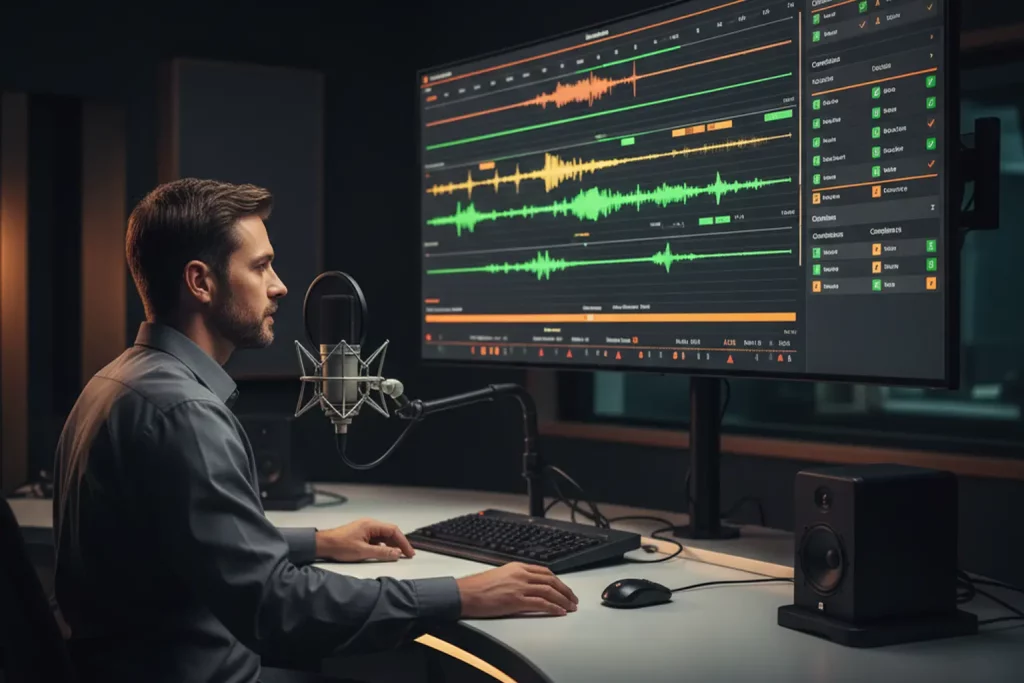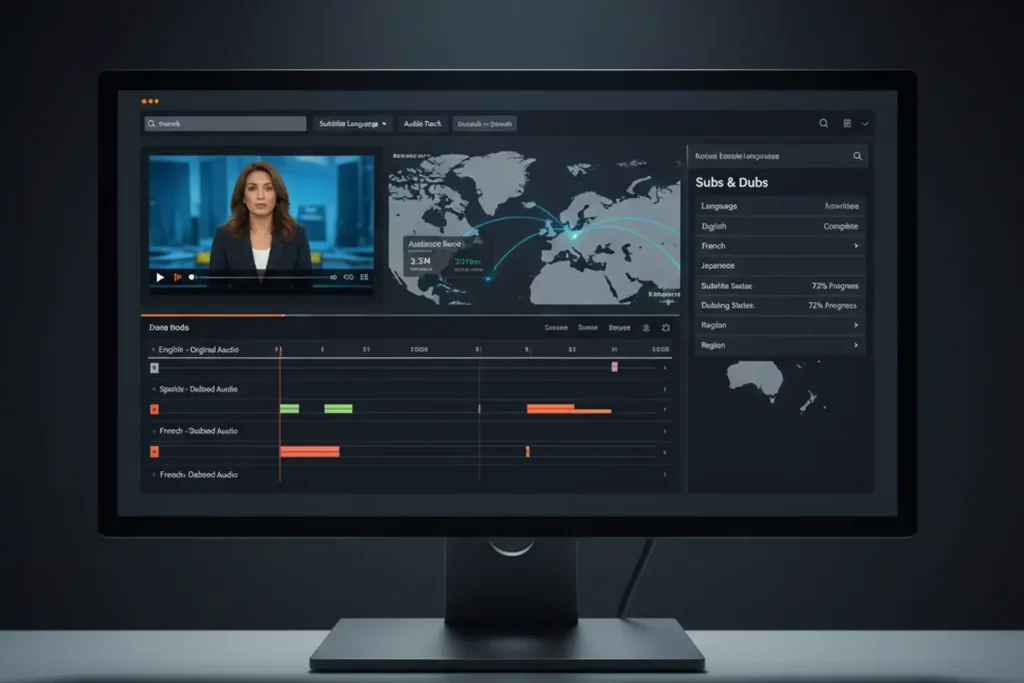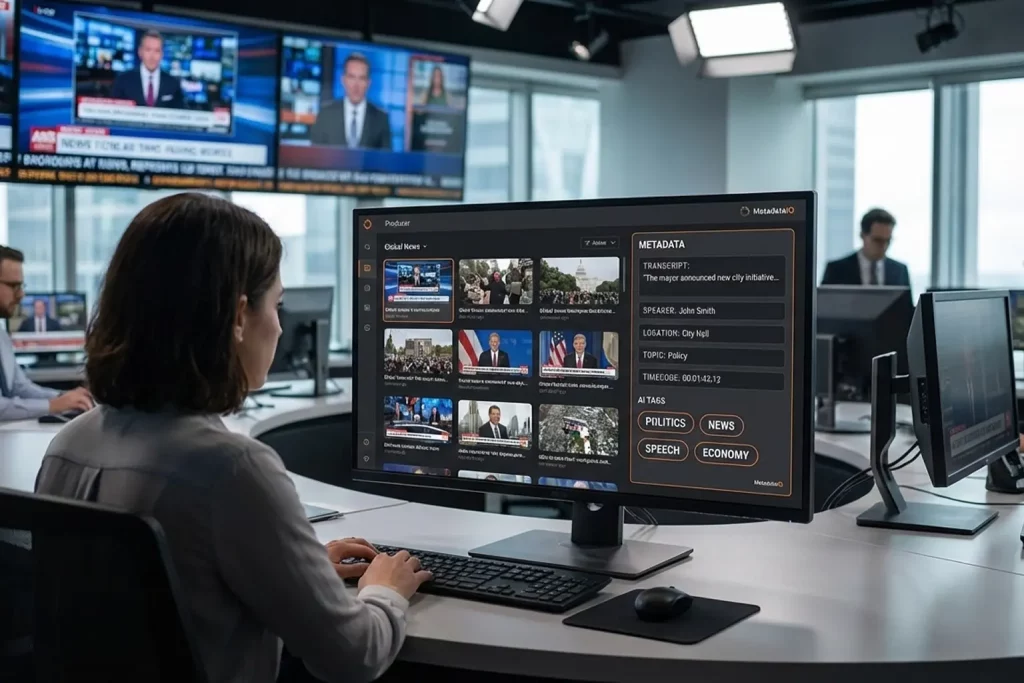Ad buyers need receipts, not guesses. More than 80 percent of national TV contracts require timestamped logs that prove every paid spot aired in the correct slot and full duration. A single missed airing can trigger make‑goods or rebates, cutting revenue. Broadcasters that automate proof of play slash dispute resolution from weeks to hours and collect invoices 30 percent faster. Work with a network that records each play event, stores it for at least two years, and delivers certified reports within one business day.
Keep reading to learn how proof of play works, which metrics matter, and how you can add airtight verification to your traffic system without hidden headaches.
What Is Broadcast Proof of Play
Proof of play shows concrete evidence that a media asset aired exactly as promised. It pairs a play event with time, date, duration, and location so advertisers can reconcile campaigns against contracts.
Defining Proof of Play in Digital Media
Proof of play captures start time, stop time, asset ID, playout device, and often signal strength. These data points let buyers confirm creative integrity and calculate impressions. The record also supports compliance teams that must demonstrate children’s ad limits or political spot separation. Because the data lives in a structured log, you can feed it into billing and BI tools for near real‑time reconciliation.
Proof of Play vs. Proof of Performance vs. Proof of Display
Proof of play proves the ad aired. Proof of performance adds contextual metrics such as audience reach, demographic breakdown, and on‑screen viewability. Proof of display validates that the screen or channel stayed on and visible. Advertisers usually start with proof of play, then layer performance data as budgets increase. Broadcasters that deliver all three win repeat business because they remove uncertainty from the buy.
Why Proof of Play Matters
Proof of play safeguards spend and builds trust between buyers and sellers.
Accountability and Transparency for Advertisers
Marketers hold stations accountable for every dollar. When a log shows a specific spot ran at 8:14 p.m. during the baseball game, the brand team feels confident in the buy. Transparent logs deter fraud and keep smaller affiliates on level terms with national networks. With verifiable data, planners can defend media choices to finance chiefs who demand proof before releasing bigger budgets.
Ensuring Contractual Fulfillment
Most insertion orders carry penalties for late or missed airings. Automated proof of play flags gaps within minutes, so traffic teams can schedule make‑goods before the campaign ends. Quick fixes honor flight commitments and preserve rate integrity. Legal departments also lean on verified logs to resolve disputes without drawn‑out correspondence.
Measuring ROI in Broadcast Campaigns
You cannot optimize what you cannot confirm. Proof of play data flows into attribution models that link call‑center spikes, site visits, or app installs to specific airings. When analysts know the exact second a spot hit, they can map downstream actions and refine creative or placement. This clarity sharpens media mix models and defends broadcast dollars against digital‑only line items.
How Digital Nirvana Simplifies Proof of Play
Our services at Digital Nirvana combine best‑in‑class software and AI to keep verification effortless.
The MonitorIQ platform captures every cue point, signs each event, and stores logs in a tamper‑proof vault. MediaServicesIQ enriches those logs with speech‑to‑text and logo detection, turning plain data into searchable insights. When clients need captions or local language compliance, TranceIQ delivers automated caption generation that slots neatly into the same workflow. Together, these tools deliver proof of play, proof of compliance, and content intelligence in a single cloud dashboard that scales from regional stations to multichannel networks.
Core Components of Proof of Play Systems
A robust system combines multiple checkpoints to leave no doubt.
Playback Logs and Timestamp Metadata
The playout server generates a raw event every time it cues an asset. The system stamps the event with frame‑accurate timecode pulled from a master clock. Logs include asset IDs that map back to traffic and billing platforms. Consistent schema lets you merge data across regions and dayparts without reformatting.
Hardware‑Level Verification (Sensors, Power Checks)
Sensors on the transmitter or encoder confirm that the device actually fired the signal. Power state, RF output, and audio levels record alongside the play event. These readings stop false positives, such as when a file cues but fails to leave the server due to a mute or a mis‑patch.
Video/Camera‑Based Verification
Some networks place small reference cameras on the output stage. The camera captures the video feed as viewers see it and runs image recognition to spot brand logos or slates. This visual evidence supplements log data and satisfies advertisers who demand indisputable confirmation.
Industry Standards and Reporting Levels
Standards bring consistency so agencies can compare apples to apples.
Self‑Reporting vs. Independent Verification
Self‑reporting relies on logs the broadcaster owns. Independent verification uses a third party to collect or certify the same data. Brands often trust a neutral auditor more, especially for high‑value events. Many networks offer both and let buyers choose their comfort level.
Manual Logs, Automated Software, Third‑Party Audits
Manual logs involve operators ticking boxes, which introduces human error. Automated software writes events directly from the playout chain, delivering higher accuracy. Third‑party audits sample data, inspect workflow, and certify compliance. Combining all three creates a layered defense that stands up to legal scrutiny.
Emerging Standards for Global Validation
Regulators lean on clear rules, such as the FCC’s sponsorship identification requirements, to keep advertising honest. Industry groups like IAB Tech Lab and EGTA are drafting cross‑market schemas that align broadcast, cable, and streaming proof of play. As adoption grows, multinational brands will receive unified reports rather than a patchwork of formats.
Technology Behind Proof of Play
Modern toolsets ditch spreadsheets for real‑time telemetry.
Software‑Based Log Generation
Playout automation platforms, including Digital Nirvana’s MonitorIQ, record every cue point and publish JSON or XML logs to cloud storage. The system signs each event with a checksum to prevent tampering. APIs push the data to dashboards, so traffic managers see exceptions as they happen. For deeper workflow tips, see our guide to real‑time compliance monitoring.
Sensor and On‑Device Verification Techniques
GPIO triggers, RS‑232 pings, and IP heartbeats report hardware state. If a power supply drops or a fan stalls, the alert pairs with the asset ID in question. These device‑level breadcrumbs help engineers fix faults before they cascade into missed airings.
External Monitoring via Cameras or Pixel Signals
Ad tags or watermark pixels fire when the creative renders on‑screen. A head‑end probe listens for those signals and logs them in parallel with server data. Because the probe sits outside the playout path, it offers an unbiased view of actual transmission.
Blockchain and Tamper‑Proof Records
Some networks hash each play event into a blockchain ledger. The immutable chain means no one can delete or edit a record without leaving fingerprints. While still niche, blockchain appeals to finance and pharma advertisers that demand the highest integrity. Our recent article on AI metadata tagging explores how these secure workflows tie into advanced search and analytics.
Proof of Play in DOOH vs. Broadcast Media
Out‑of‑home screens and linear channels share goals but face different terrain.
Similarities in Reporting Requirements
Both DOOH and broadcast buyers expect timestamped logs, location data, and proof of uptime. They want to tie exposures to audience metrics and receive certified summaries before paying invoices.
Unique Challenges in Broadcast Environments
Broadcast uses multiplexed signals, regional inserts, and network breaks. A single ad can air on 200 affiliates, each with local overrides. Proof of play must capture those splits and still roll up to a national view. The RF path also introduces possibilities for blackouts or EAS overrides, which the system must track.
Synchronizing Timecodes Across Platforms
To merge DOOH, streaming, and broadcast reports, networks lock all devices to Network Time Protocol or SMPTE 2059. Accurate sync removes drift that could misalign impressions and conversion spikes. A unified clock also simplifies attribution tools that stitch journeys across screens.
Implementation Workflow
Rolling out proof of play touches traffic, engineering, and finance teams.
Integrating PoP with Ad Scheduling Systems
Begin by mapping asset IDs and break codes between the traffic system and the logging engine. Use shared APIs or middleware to fetch schedules and push confirmation events back. This loop keeps planners updated without manual exports.
Setting Verification Thresholds and Alerts
Define rules such as “flag if an ad starts more than five seconds late” or “alert if play duration differs by two frames.” Clear thresholds turn raw data into actionable tickets. Send alerts to email, Slack, or an NOC dashboard so teams react quickly.
Automated vs. Manual Compliance Checks
Automated scripts scan logs for exceptions and compile nightly reports. Manual reviews focus on edge cases or high‑value integrations, such as political windows. Combining both keeps volume manageable while preserving human oversight where it counts.
Real‑Time Dashboards and Reporting
Dashboards visualize live play status, red‑yellow‑green uptime, and exception counts. Managers drill down to station, region, or creative ID. Because the data updates every minute, they can reroute traffic or book replacement spots before viewers notice a gap.
Reporting and Analytics
Logs alone do not tell the full story. Analytics give them context.
Raw Logs, Summaries, and Performance Reports
Raw logs list each event. Summaries roll them into counts by daypart or DMA. Performance reports layer in reach and frequency. Offering all three lets buyers choose the granularity they need without cluttering inboxes.
Metrics: Play Counts, Durations, Uptime Stats
Core metrics include number of plays, actual versus scheduled durations, and device uptime. Consistent uptime above 99.5 percent signals healthy infrastructure. Deviations surface hidden encoder faults or local dropouts.
Foot Traffic, Audience Reach, and Attribution Metrics
When paired with smart TV panels or mobile location data, proof of play logs fuel foot‑traffic studies. Advertisers correlate store visits or app installs with specific airings and adjust media weight accordingly.
Common Challenges and Pitfalls
Even seasoned broadcasters trip on these issues.
Scheduled vs. Actual Playback Discrepancies
Automation may swap spots due to last‑minute changes, causing mismatches between schedule and reality. Real‑time monitoring catches the swap and triggers an immediate schedule refresh.
Display or Stream Downtime Without Notice
Edge encoders can crash quietly, leaving dead air. Hardware probes that measure carrier energy expose silent failures within seconds, letting engineers reroute before the break ends.
Incomplete Records and Data Gaps
Network outages or clock drift can wipe records. Redundant log paths and periodic exports to cloud storage close these gaps.
Device Malfunctions Masked by Logs
A playout server might log a play even when its SDI output freezes. Camera‑based verification provides the ultimate backstop by capturing the physical feed.
Enhancing Trust with Third‑Party Auditing
Independent eyes boost confidence and win renewals.
Independent Verification vs. Vendor Self‑Reporting
When the same vendor places and verifies the ad, buyers may suspect bias. An external auditor such as TAG or BPA Worldwide signs off on logs and removes conflict of interest.
Real‑Time vs. Post‑Campaign Certification
Real‑time audits flag problems immediately, but post‑campaign audits dive deeper and certify the entire flight. Running both keeps campaigns clean and closes the loop with documented proof.
Role of Industry Bodies and Audit Frameworks
Bodies like the Media Rating Council publish audit guidelines that set sample sizes, retention periods, and error thresholds. Following these frameworks signals professionalism and reduces procurement friction.
Security & Anti‑Fraud Measures
Strong security stops tampering and spoofing. Modern practices also align with the FTC’s advertising guidelines to keep consumer trust intact.
Tamper Detection and Secure Playback Layers
Encrypt logs at rest and in transit. Use digital signatures to detect edits. If a checksum fails, the record flags for review.
Ensuring Data Integrity in Transmission
TLS tunnels and VPN links protect data sent from remote transmitters to central stores. Packet loss monitors resend missing segments to keep logs intact.
Fraud Prevention Techniques (Pixel‑tags, Blockchain)
Pixel tags fire only when the creative renders, stopping “ghost plays.” Blockchain adds an immutable ledger, making fraudulent edits nearly impossible.
Best Practices for Broadcasters
Follow these habits to keep advertisers happy.
Defining Clear PoP Requirements Upfront
State expected reporting cadence, metrics, and file formats during sales calls. Clear scope prevents surprises later.
Automating Compliance and Alerting
Automate wherever possible. Scripts catch 99 percent of issues before humans wake up.
Maintaining Redundant Verification Layers
Layer server logs, hardware probes, and camera feeds. If one fails, the others cover.
Regular Audits and System Health Checks
Schedule quarterly self‑audits and annual third‑party reviews. Consistent checks prove you value accuracy.
The Future of Proof of Play
Tech moves fast, and so does verification.
AI‑Driven Playback Verification
Machine‑learning models now detect brand marks and scene changes, confirming creative integrity without manual spot lists. AI shrinks verification time while boosting accuracy.
Programmatic and Ad‑Smart Verification
As programmatic linear buys grow, systems will ingest bid data and verify spots on the fly. Buyers will receive proof within minutes of a dynamically inserted ad.
Cross‑Platform Attribution and Integration
Unified IDs will link TV, streaming, and DOOH logs. Marketers will trace a single household’s exposure across every screen.
Standardization Across Networks & Regions
Global standards will settle on shared schemas and security controls, making multi‑country buys simpler and safer.
Partnering with Digital Nirvana for Trusted Verification
At Digital Nirvana, we help you move beyond basic logs to complete, actionable intelligence. Our media and broadcasting AI suite wraps MonitorIQ, TranceIQ, and MediaServicesIQ into a unified dashboard that tracks every frame, enriches metadata, and generates ready‑to‑bill reports. Clients gain instant alerting, deep analytics, and secure archives without ballooning headcount.
From first integration call to full deployment, our customer success team remains on hand with best practices and quarterly optimization sessions. That partnership mindset feeds new feature roadmaps and keeps your workflows future‑proof against ever‑tightening compliance demands.
In summary…
Proof of play gives broadcasters and advertisers a shared source of truth.
Here are the key points:
- Verified timestamps confirm each ad aired as promised.
- Frame‑accurate logs resolve make‑good disputes quickly.
- Frame‑accurate logs resolve make‑good disputes quickly.
- Multi‑layer verification blends logs, sensors, and video feeds.
- Redundancy blocks fraud and catches silent failures.
- Redundancy blocks fraud and catches silent failures.
- Standards from the FCC and FTC keep reporting credible.
- Certified formats shorten agency reconciliation cycles.
- Certified formats shorten agency reconciliation cycles.
- Real‑time dashboards surface issues before viewers ever notice.
- Automated alerts let traffic teams reroute spots within minutes.
- Automated alerts let traffic teams reroute spots within minutes.
- Digital Nirvana’s unified platform combines proof of play, compliance, and analytics.
- One dashboard cuts manual log handling by 70 percent and speeds billing.
- One dashboard cuts manual log handling by 70 percent and speeds billing.
With these fundamentals in place, broadcasters protect revenue, advertisers maximize ROI, and both sides operate with full transparency.
FAQs
Q: How accurate are proof of play timestamps?
A: Systems lock to NTP or GPS clocks, giving frame‑level accuracy down to milliseconds.
Q: Do I need camera verification if I already capture server logs?
A: Cameras add a visual backstop and catch muted or frozen outputs that logs might miss.
Q: How long should I store proof of play records?
A: Most contracts call for two years, though political ads may require longer for regulatory audits.
Q: Can proof of play integrate with my existing traffic software?
A: Yes. APIs and middleware map asset IDs and pass confirmations back to systems like WideOrbit and Imagine.
Q: Does blockchain add noticeable cost to verification?
A: Implementation costs exist, but the tamper‑proof benefit outweighs them for high‑value campaigns.




